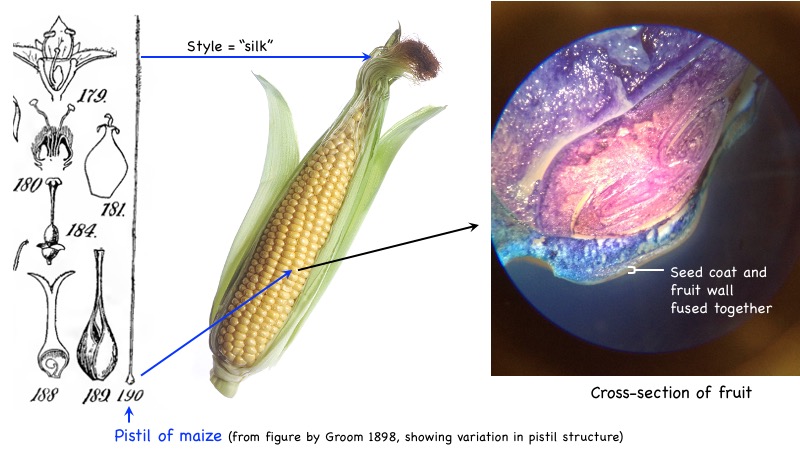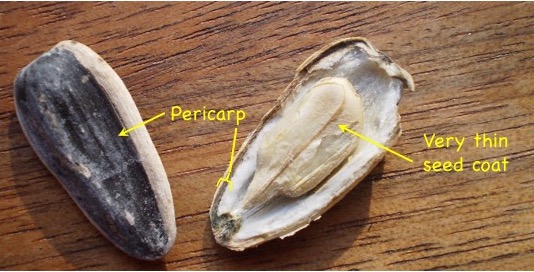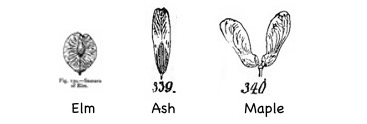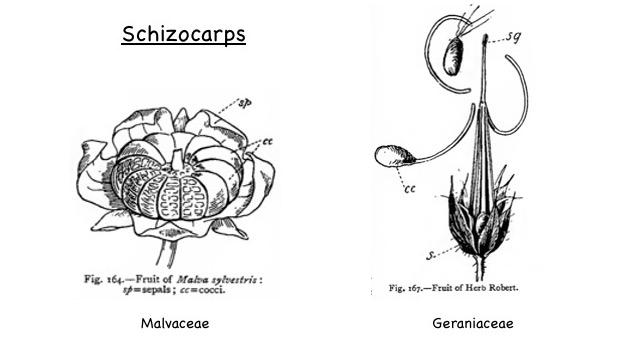Dry indehiscent fruits
Dry indehiscent fruits include the caryopsis, the achene, the samara, and the "nut".
A caryopsis is an indehiscent fruit in which the seed coat is completely fused to the fruit wall. This fruit type is characteristic of the grass family and is commonly called a grain. A grain (caryopsis) is technically a one-seeded fruit, but you can't get the seed out of the fruit because they are fused together.

An achene is an indehiscent fruit in which the seed coat is NOT fused to the fruit wall. An example is the sunflower "seed": the shell of the sunflower "seed" is actually the fruit wall.

A samara is a winged fruit. (Seeds of some species may be winged, but samaras are winged fruits; they each contain a single seed.)

Some indehiscent fruits with very hard pericarps are called "nuts" (not shown).
A schizocarp is a fruit that separates into (usually) single-seeded segments at maturity. The schizocarp develops from the ovary of a single pistil with multiple, fused carpels. At maturity, however, fruit sections derived from different carpels separate from each other. These fruit sections are called mericarps. They are considered indehiscent because, although the fruit splits up, the fruit sections do not split open to release their seeds. Some members of the Malvaceae (the hibiscus family) and the Geraniaceae (the geranium family) have schizocarps.

In a somewhat similar manner, lobes of deeply lobed ovaries may separate at maturity, with each lobe containing a single seed. These single-seeded structures are called nutlets. They are not considered schizocarps because the lobes on the ovaries (which become nutlets) do not represent separate carpels.

Check your understanding: